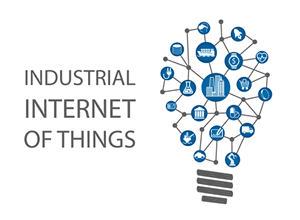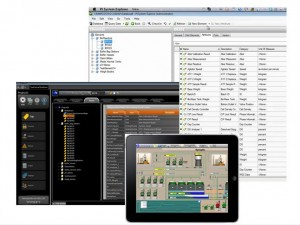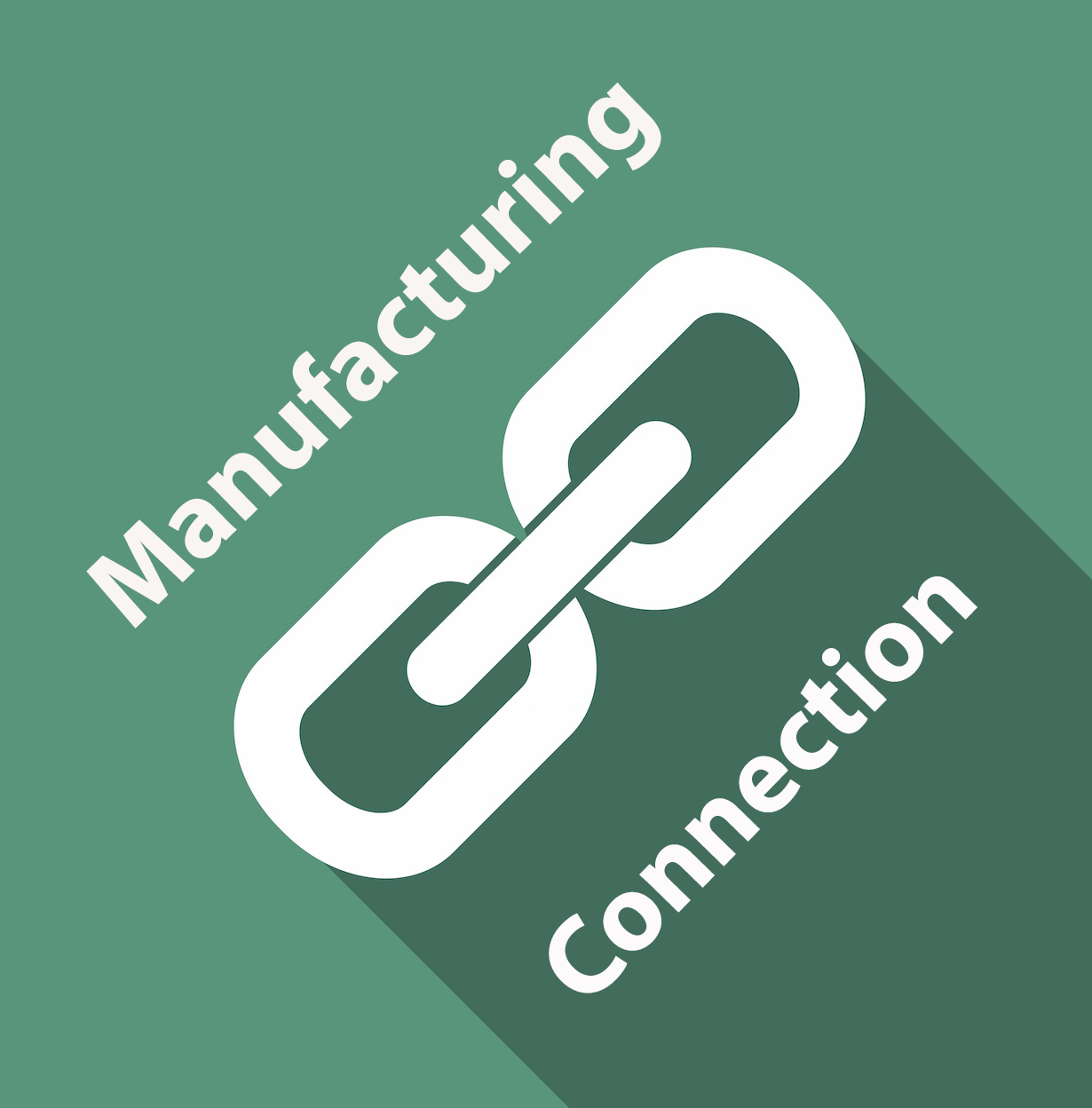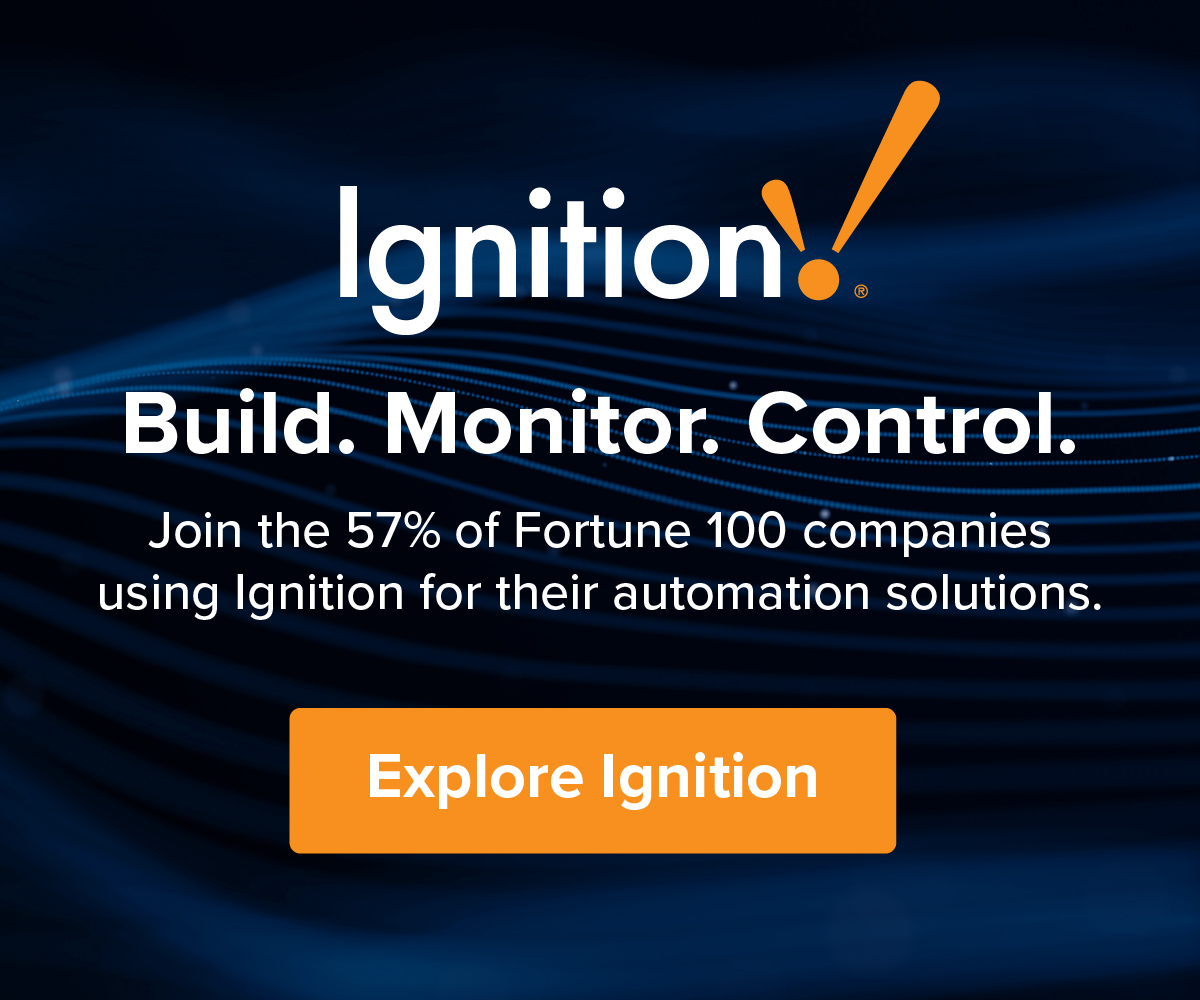
by Gary Mintchell | Sep 16, 2016 | Automation, Internet of Things, Interoperability, Operations Management, Technology
September 14-15 found me back in Chicago for the International Manufacturing Technology Show (IMTS) and an IIoT conference sponsored by OMG and IIC. I’ll have several reports even though I fly to Sacramento Sunday for the Inductive Automation Ignition Customer Conference. (I’m writing this on Friday, but it may not get posted.)
 Tom Burke, OPC Foundation President and Executive Director, stopped me as I walked the aisle. He talked about the cool things happening with OMAC. I do not know the technical details, but OMAC wishes to specify (not sure of exact technical term) OPC UA into its PackML as its communications protocol.
Tom Burke, OPC Foundation President and Executive Director, stopped me as I walked the aisle. He talked about the cool things happening with OMAC. I do not know the technical details, but OMAC wishes to specify (not sure of exact technical term) OPC UA into its PackML as its communications protocol.
Turns out this is much more significant than I gleaned from the press release. By the time I waded through the marketing general statements, I gave up on reading the rest. For some reason, marketing and/or PR people seem to want to hit every buzz word in the beginning of a release in order to show relevance or something and then bury the good stuff almost off-hand in the bottom of the text.
This is a significant advance for interoperability. There remains a stance in the industry for point solutions that may be based on open standards, but are explicitly not interoperable—everything is held within the kimono, so to speak. Interoperability benefits an entire industry. The more that end users buy according to interop, the faster the pace of adoption will be.
IIoT and Pack Expo
Look for OPC Foundation (booth N-4702), PLC Open (booth N-4703), and OMAC (booth N-4800) at Pack Expo the first week of November. Be sure to vote first! Personally, I am torn between going to a single-supplier event or this one. Both are too expensive for the lone entrepreneur. I’ll wind up with one, though.
The OPC Foundation provided a couple of bullet points about its news:
- the results of joined collaboration between OPCF with OMAC about PackML mapping into OPC UA namespace
- the results of joined collaboration between OPCF and PLCopen about IEC61131-3 PLCopen Client FB to allow initiating an OPC UA connection from inside the controller
OMAC and IIoT
Here is the news from OMAC. “The Organization for Machine Automation and Control (OMAC), OPC Foundation, and PLCopen are working together to help advance communications protocols necessary for the Industrial Internet of Things (IIoT) to succeed.
Interoperability among devices and machines that use different protocols is a significant challenge in realizing the full potential offered by the Industrial Internet of Things. By collaborating on companion specifications to the standards and protocols they’ve already developed OMAC, OPC Foundation, and PLCopen can advance the quality and efficiency of data sharing and communication at the machine and production line and up through the enterprise. Collaborative efforts by standards organizations, such as OMAC, OPC Foundation, and PLCopen, align with the Industrial Internet Consortium’s goal to ultimately identify and define building blocks for interoperability that make smart factories and IIoT possible.
“Standards are needed to support communications from machine-to-machine and from the plant floor to interfaces that will allow large scale data analytics and information transfer,” says John Kowal, a member of OMAC’s Board of Directors, co-chair of the Industrial Internet Consortium’s Smart Factory Task Group, and business development director for B&R Industrial Automation Corp. “It just makes sense for these organizations which have individually done so much to advance automated manufacturing to collaborate and avoid redundant developments.”
Here’s how the three automation standards leaders are bringing their efforts together. One of OMAC’s major initiatives has been promotion of the ISA-TR88.00.02 automation standard commonly known as PackML. The second generation was released last year. Manufacturers and machine builders worldwide have implemented ISA-TR88 on various control platforms to increase speed to production, ease packaging line integration and improve reliability. While PackML defines machine modes, states and tag naming conventions, it does not specify a communications protocol.
The OPC Foundation’s Unified Architecture (OPC UA) is an industrial interoperability framework. It delivers information modeling with integrated security, access rights, and all communication layers to provide plug and play machine-to-machine (M2M) communication inside factories. It is scalable across the plant floor and from sensor to IT enterprise and cloud scenarios. OPC and PLCopen recently worked together to define a set of function blocks to map the IEC 61131-3 global standard for industrial controls programming to the OPC UA information communication model. The latest version was released earlier this year. IEC 61131-3 is the only global standard for industrial control programming and is recommended by OMAC in its Packaging Guidelines document.
To take their efforts to the next level, OMAC and the OPC Foundation have established a taskforce to develop a companion specification for ISA-TR88/PackML and OPC UA by the end of 2016. The task force led by Sari Germanos, open automation manager for B&R Industrial Automation, includes members of OMAC and OPC Foundation from around the world. Participation is open to interested members of either organization.
“A standard communication protocol, used consistently across the industry, is vital for realizing the full benefits of automation standards such as ISA-TR88, which then can be a valuable data source for smart factories and the IIoT,” says Dr. Bryan Griffen, OMAC Chairman and Nestlé Group Engineering Manager. “A companion specification between ISA TR88 and OPC UA fills this need and builds on the work completed with PLCopen earlier this year. The opportunities to transform manufacturing as hardware and software solutions are integrated through consistently applied, standardized protocols are extraordinary. We’re pleased to be a part of those efforts worldwide.”
“Today, there is more reason than ever to believe that communications standards will proliferate, as the IIoT drives the need to flatten network communication architectures,” says OPC Foundation Director Thomas Burke. “Along with organizations like OMAC and PLCopen, we’re actively engaged to do just that.”
“By collaborating and ensuring the standards we’ve developed work together we ensure transparent and fully secured communication right out of the box with standardized access between any OPC client and server via a secure channel, independent from network architecture and protocol or machine type and controls,” says PLCopen Managing Director Eelco van der Wal.

by Gary Mintchell | May 13, 2016 | Internet of Things, Operations Management
 Information Technology departments are playing second fiddle to Operations Technology as enterprises tune up for the Internet of Things (IoT).”
Information Technology departments are playing second fiddle to Operations Technology as enterprises tune up for the Internet of Things (IoT).”
Browsing through my news sources, I discovered this provocative lede. It was something that begged for a deeper dive. Especially given the continuing conversations about the IT/OT divide. Then there is the question about the source of innovation in a company. Is IT innovative? Or is OT?
The article was in Computer World. Although a little shallow, the writer nailed it for a generalist writer who doesn’t really get manufacturing. “IoT straddles IT and operational technology, two disciplines that for decades have lived side by side without much interaction. Operations people handle things like lights, locks and machine tools, while IT folks buy the computers and run them.
Now it turns out that very small computers, such as networked sensors, can help a company’s infrastructure work better. But more often than not, IT is not in charge of those systems, the Technalysis survey showed.”
The survey, The Promise and Perils of Change: Enterprise IOT Survey Report, was by Bob O’Donnell, President and Chief Analyst, TECHnalysis Research, LLC. The online survey was conducted in March 2016 of
620 US-based individuals working for companies who are involved with Internet of Things applications for their companies.
50% (310) came from medium-sized companies (100-999 employees) and 50% (310) came from large companies (1,000+ employees). Industries represented included Tech, Retail, Manufacturing,
Education, Health Care and Transportation.
I’m not sure I 100% accept his definition, but it’s a good one—“IOT is defined as a network of non-traditional computing devices that are used to collect data on equipment, people or processes in an organization. Most systems consist of simple endpoints outfitted with a set of sensors that are connected together on a network and deliver data to a central point for additional analysis. Examples of IOT solutions range everywhere from smart lighting systems to vehicle tracking devices to factory production monitoring and beyond.”
Key Findings
- IOT usage is reasonably widespread, but still most popular with tech-related companies
- IT is heavily involved in IOT, but operations is the group most typically responsible for IOT
projects
- Two-thirds of all IOT projects will be managed outside of IT
Top IOT applications are:
- Employee monitoring
- Security and identification
- Energy savings
Most organizations are more focused on improving processes than saving money. This is an interesting finding. Improving processes must have financial metrics, too, but the results are usually longer lasting than a simple cost saving.
Of those who do expect to save money, top savings areas are:
- More efficient operations
- Monthly utilities
- Saving employee time
- Reduced downtime
- Business cost of goods/supplies
When managers were projecting purchases, they looked first at edge devices or endpoints. Then they looked at networks—you’ve got to be able to connect the devices or you really won’t have Internet of Things, right?
One last thing had to do with type of networking. The origins of IoT lay with M2M, which was architected with cellular wireless communication. Three-quarters of all IoT connectivity reported was composed of WiFi and Ethernet. I’m not shocked.

by Gary Mintchell | Jan 20, 2016 | Automation, Internet of Things, Networking, Operations Management
 Everyone is in a rush to get an opinion or observation published about the Internet of Things. Evidently it gets lots of page views. Recently other analysts have been publishing thought pieces on IoT in Industry. It appears they have reached the same conclusion that I first broached a couple of years ago. The IoT is not a “thing.” To make any sense of it and use it for any strategy, it must be thought of as an ecosystem encompassing a variety of technologies.
Everyone is in a rush to get an opinion or observation published about the Internet of Things. Evidently it gets lots of page views. Recently other analysts have been publishing thought pieces on IoT in Industry. It appears they have reached the same conclusion that I first broached a couple of years ago. The IoT is not a “thing.” To make any sense of it and use it for any strategy, it must be thought of as an ecosystem encompassing a variety of technologies.
Here is an article that appeared in the Sloan MIT Management Review. Since I am a subscriber, I don’t know if you can see the article at this link.
The writer is Sam Ransbotham is an associate professor of information systems at the Carroll School of Management at Boston College and the MIT Sloan Management Review Guest Editor for the Data and Analytics Big Idea Initiative. He suggests, “The Internet of Things will bring huge changes to the way markets and businesses work — and it could get messy.”
Here is a bromide that I’ve read a thousand times, “Most businesses aren’t ready for the changes to the marketplace that the Internet of Things will bring. But the time to prepare for them is now.”
Actually most business adapt. Some are visionary and will develop new products, processes, and services–and make a lot of money. Others will adapt and survive. Still others will wonder what happened and die. That is the way of business for at least 5,000 years.
Use Case for Internet of Things
“Yes, the potential insights from IoT are enticing. For example, it’s fun to think about the potential personal and even societal benefits from self-driving cars, such as fewer accidents, no problems with parking, more productivity while traveling, car sharing, greater infrastructure efficiency, etc. But perhaps a more profound implication is the data that they can collect. These cars will also be widely distributed “things,” gathering performance data that can help manufacturers diagnose problems, operational data that can help mechanics prevent failures, driver data that can help insurers understand risk, road data that can help cities improve infrastructure, etc. These kinds of insights, we’re ready for.”
But there are a lot more changes coming with the IoT transformation than many people may recognize.
Ransbothem looks into information technology as a model for what will happen in IoT. “About a decade ago, advances in information technology converged to fuel a boom in corporate use of analytics. First, widespread implementation of information systems captured unprecedented amount of data in ways that could be used in isolation or combined. Second, tools and technologies allowed the inexpensive storage and processing. Third, savvy analytical innovators creatively combined these to show everyone else what could be done.”
We have seen all this play out in industrial systems. There remains more to be done, here, though.
He proceeds to look at Internet of Things. “First, the cost and physical size of sensor technology have dropped such that they can be incorporated into most items. Second, widespread communications infrastructure is in place to allow these distributed components to coordinate. Third, once again, savvy innovators are showing the rest of us the possibilities from the data they collect.”
Manufacturing and production are not only poised to exploit these technologies and strategies, they have already been implementing to one degree or another. But his point is valid. IoT needs the ecosystem of sensing devices, networking, communication technology, databases, analytics, and visualization.
Ransbothem identifies four areas of change. Of these, I direct your attention to the last–process changes. I think everything feeds into process changes–not just the processes to make things, but also the information technology, supply chain, and human processes that must not only adapt but thrive with the new information awareness.
- Market Power: IoT should provide a greater amount and a greater value of data, but are companies ready to align their interests in obtaining value from this data with the multiple other companies and end users who create, own, and service the products that originate the data? In the driverless car example, it is easy to see how multiple stakeholders could make use of the data from cars; the same is true for other devices. But it may not be clear who owns what data and how it can be used.
- Complexity: Few organizations are prepared to be hardware and software development companies. But that’s what the Internet of Things will enable. As products are built with embedded sensors, the component mix increases in complexity. As a result, manufacturing systems and supply chains will become more elaborate. Software embedded in products will need to be updateable when the inevitable shortcomings are found.
- Security: If we believe data is valuable, then we need to be ready for people to want to take it from us — why would data be any different than any other precious item? The IoT context intensifies the need for security requirements; for example, sensors or software that allow physical control of the product make attacks easier.
- Process Changes: Many business processes continue to be “pull” oriented. Information is gathered, then analyzed, then decisions are made. This works when change is slow. But with the IoT transition, data will stream in constantly, defying routine reporting and normal working hours. Flooding data from IoT devices will give opportunities for quick reaction, but only if organizations can develop the capacity needed to take advantage of it. Few mainstream large companies are ready for this, much less small- to medium-sized companies that lack the resources of their larger corporate brethren.
The Internet of Things is bringing and will continue to bring advances in how we do business. How well will executives, managers, and engineers execute on this vision? That is key.

by Gary Mintchell | Jan 7, 2016 | Automation, Technology
 Raspberry PI is an intriguing small, inexpensive computing platform. I’ve seen a number of really cool projects on various tech blogs and video podcasts. I figure there must be a number of engineers figuring out how to implement these devices to reduce cost and complexity.
Raspberry PI is an intriguing small, inexpensive computing platform. I’ve seen a number of really cool projects on various tech blogs and video podcasts. I figure there must be a number of engineers figuring out how to implement these devices to reduce cost and complexity.
Use of Linux in industrial automation has never reached any sort of critical mass. I started following it somewhere around 1999 and even started to write about Linux in automation for a Linux magazine about that time. But Microsoft Windows won (remember the 1999 ARC Forum in Orlando when the Sun guys promoting Java as an OS packed up and headed out?), and Linux has been sort of peripheral.
I keep expecting something to happen. We have moved to the cloud in a big way for many applications including HMI/SCADA. Maybe we’ll see more in the near future.
HMI for IoT and Raspberry PI and Linux
Betting on that is Tatsoft. It has released its FactoryStudio Industrial IoT (IIoT) HMI for Raspberry PI and Linux.
FactoryStudio delivers real-time information with a set of fully-integrated modules in a unified and intuitive engineering user interface. With FactoryStudio, projects can scale from local embedded devices and mobile applications up to very large, distributed, high performance fault-tolerant systems. It provides an Application Development Platform to allow easy creation of solutions for the device level itself, with Graphical real-time displays, communication protocols to PLC’s, data logging, alarm engine, local SQL storage and C#/VB.NET scripting. Those embedded applications can easily communicate with remote FactoryStudio applications on the cloud, or on premises, accessing and consolidating distributed information.
The FactoryStudio platform can also work as the presentation layer and data gateway to historian systems, such as OSIsoft PI, Prediktor APIS, and ERP systems such as SAP, or directly connect with the SQL enterprise databases.
“The development tools are the same whether you are deploying projects to Microsoft Windows computers running .NET Framework, Linux operating system with the Mono Framework and Raspberry PI devices. For Raspberry PI, we also included easy access to onboard I/O in addition to all other HMI features.” explains Marcos (Marc) Taccolini, Tatsoft LLC CTO.
This release complements the FactoryStudio multi-platform solutions that already have runtimes for Windows Compact Framework and iOS devices. According Dave Hellyer, Sr VP Marketing, “Tatsoft believes that we can use the intersection of people, data and intelligent machines to have a far-reaching impact on the productivity, efficiency and operations of industries around the world.”

by Gary Mintchell | Dec 9, 2015 | Internet of Things, News
The Internet of Things (IoT), or specifically the Industrial Internet of Things (IIoT), is all the rage right now. All companies want to be seen to be developing it. Or using it. I’ve even seen some standards bodies ask how their standards reflect the Internet of Things.
There are some problems here. No one really knows what the Internet of Things is. Maybe because all the analysts (including me) are rushing to be the one to provide the definitive definition. I’ve been discussing “ecosystem” to describe the phenomenon in its entirety. Recently I saw another analyst also use the term.
Further, there are no standards. If you don’t know what it is, then there can be no standards. However, it is built upon standards. IP communications, for example.
Kepware Technologies is taking a stab at the situation. It announced Dec. 8 the launch of its IoT Alliance program. The alliance is composed of a strategic network of IoT solutions providers that are committed to growing the global IoT market potential and shaping the direction of industry through smart technology, thought leadership, and marketing initiatives. Alliance members will have access to proprietary technology from Kepware that enables their respective solutions to access industrial data from the industry’s communications platform, KEPServerEX.
“The IoT Alliance has the potential to be a disruptive force in the Industrial Automation market,” said Tony Paine, CEO, Kepware. “By collaborating closely with Kepware and fellow alliance members, we have the capability to release new, innovative, and proven solutions—reducing risk and accelerating time to market. This translates to tangible IoT solutions for our customers.”
Kepware offers IoT Alliance members a connected network of more than 40 technology partners, 80 system integrators, and 90 Kepware resellers operating in more than 100 countries. By establishing relationships between alliance members and existing partners, Kepware aims to introduce members to new markets and opportunities. Furthermore, the alliance offers members proprietary insight into Kepware’s product road map and creates a safe environment for interoperability and proof of concept testing.
Kepware recently released the IoT Gateway for KEPServerEX, which streams industrial data into Cloud and on-premise solutions for real-time analytics.
The initial Alliance partners are:
- Aizoon – sells Consulting Services in IT, Innovation for business, Engineering, Process and Organization, Cyber Security, IoT, Smart Factory
- Altizon – created an Enterprise Internet of Things (IoT) Platform with special focus on Manufacturing and CleanTech (Energy) Sectors
- DeviceLynk – embraces Industrial IoT technology by creating informative dashboards that are cloud based and capable of collecting and visualizing data from any connected device
- Falkonry – enables analysts to produce real-time condition predictions from complex sensor datasets
- Informatica – delivers enterprise data integration and management software powering analytics for big data and cloud
- IOT Technology Solutions – provides product management resources and customer teams that deliver the complete definition, architecture, design, coding, testing and deployment of an IoT platform, solution or product
- Mnubo – it’s SmartObjects service transforms ‘connected things’ into ‘smart objects’. Its focus is to help extract true value from sensor data by delivering advanced real-time analytics, strategic insights and enabling richer applications
- Perseus – provider of managed services for high-precision, high-speed, high-performance applications
- Splunk – operational intelligence platform that allows customers to search, monitor, analyze and visualize machine data
- ThingWorx – A PTC company providing connectivity solutions

 Tom Burke, OPC Foundation President and Executive Director, stopped me as I walked the aisle. He talked about the cool things happening with OMAC. I do not know the technical details, but OMAC wishes to specify (not sure of exact technical term) OPC UA into its PackML as its communications protocol.
Tom Burke, OPC Foundation President and Executive Director, stopped me as I walked the aisle. He talked about the cool things happening with OMAC. I do not know the technical details, but OMAC wishes to specify (not sure of exact technical term) OPC UA into its PackML as its communications protocol.

 Information Technology departments are playing second fiddle to Operations Technology as enterprises tune up for the Internet of Things (IoT).”
Information Technology departments are playing second fiddle to Operations Technology as enterprises tune up for the Internet of Things (IoT).”
 Raspberry PI is an intriguing small, inexpensive computing platform. I’ve seen a number of really cool projects on various tech blogs and video podcasts. I figure there must be a number of engineers figuring out how to implement these devices to reduce cost and complexity.
Raspberry PI is an intriguing small, inexpensive computing platform. I’ve seen a number of really cool projects on various tech blogs and video podcasts. I figure there must be a number of engineers figuring out how to implement these devices to reduce cost and complexity.




